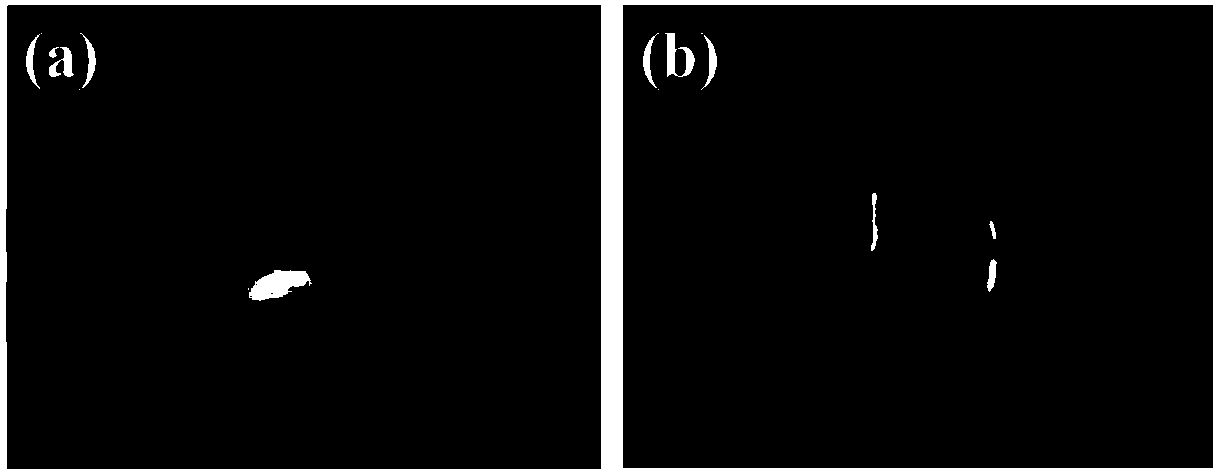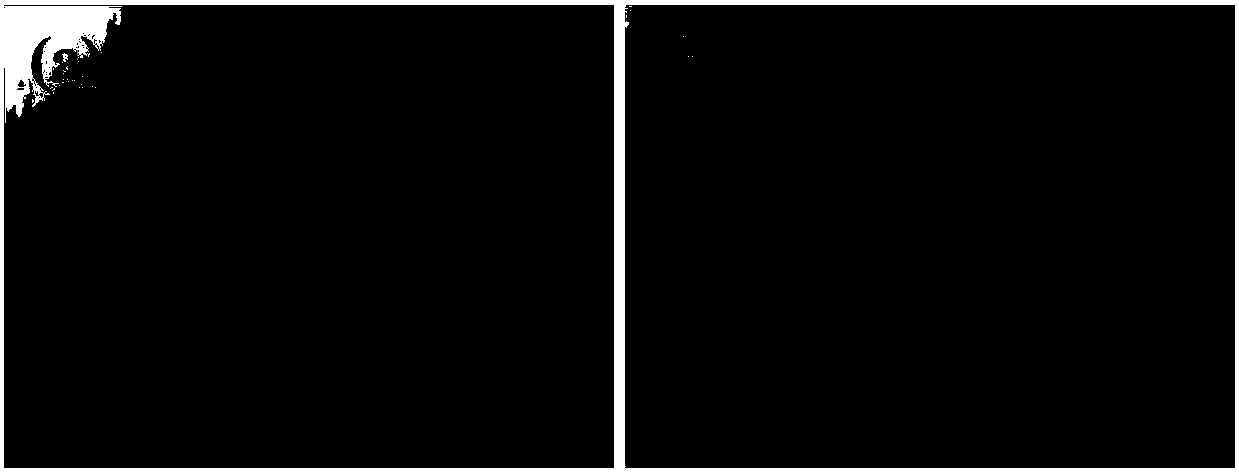Surface modification method and application of porous material
A porous material and surface modification technology, applied in the field of surface modification of porous materials, can solve the problems of poor stability of surface coating, difficult modification, poor biocompatibility, etc., to overcome poor mechanical strength, improve surface hydrophilicity, enhance The effect of stain resistance
- Summary
- Abstract
- Description
- Claims
- Application Information
AI Technical Summary
Problems solved by technology
Method used
Image
Examples
Embodiment 1
[0049] Example 1: Modification of polystyrene (PS) electrospun fiber membrane with zwitterionic acrylamide carboxybetaine (CBAA) hydrogel:
[0050] The structural formula of CBAA monomer is as follows:
[0051]
[0052] The polystyrene (PS) fiber membrane was prepared by general electrospinning technology, immersed in ethanol for 2 min, then taken out, and the ethanol on the surface was removed with filter paper. Take 1mL of 1M sodium chloride aqueous solution, add 699mg of carboxybetaine acrylamide monomer, then add 4.4mg of cross-linking agent N,N'-methylenebisacrylamide, initiator 2-hydroxy-2-methyl- 1.8 mg of 1-phenyl-1-acetone, dissolved until it becomes a homogeneous solution, the mass percentages of the above components are as follows:
[0053]
[0054] Then put the PS fiber membrane into the solution, ultrasonically infiltrate it for 20 minutes at an ultrasonic frequency of 30 Hz, take it out, remove the solution on the surface of the fiber membrane with filter ...
Embodiment 2
[0055] Example 2: Modification of polyvinyl chloride (PVC) electrospun fiber tubes with zwitterionic carboxybetaine methacrylamide (CBMAA) hydrogel:
[0056] The structural formula of CBMAA monomer is as follows:
[0057]
[0058] The PVC fiber tube was prepared by general electrospinning technology, which was immersed in ethanol for 2 min and then taken out. Take 2 mL of deionized water, add 820 mg of carboxybetaine methacrylamide monomer, then add 28.57 mg of cross-linking agent glycerol diacrylate, and 8.57 mg of initiator benzyl dimethyl ether, and dissolve until it becomes a uniform solution. Component mass percentages are as follows:
[0059]
[0060] Then put the PVC fiber tube into the solution, ultrasonically infiltrate it for 30 minutes at an ultrasonic frequency of 20 Hz, take it out, and use a low flow rate nitrogen flow to purge for 20 s to remove excess solution on the inner and outer tube walls, and put the fiber tube into a 37°C ultraviolet Cross-link i...
Embodiment 3
[0061] Example 3: Modification of biomedical porous titanium with zwitterionic carboxybetaine methacrylate-1 (CBMA-1) hydrogel
[0062] The structural formula of CBMA-1 monomer is as follows:
[0063]
[0064] Take 1M sodium chloride aqueous solution, add carboxybetaine methacrylate-1 (CBMA-1) monomer 990.2mg, then add crosslinking agent polyethylene glycol diglycidyl ether 5.4mg, add initiator ammonium persulfate 2mg , N,N,N',N'-Tetramethylethylenediamine 1mg, dissolved until it becomes a uniform solution, the mass percentage of the above components is as follows:
[0065]
[0066] Then put biomedical porous titanium into the mixed solution, take it out after ultrasonic infiltration at an ultrasonic frequency of 40Hz for 40min, remove the solution on the surface of biomedical porous titanium sheet with filter paper, and put the biomedical porous titanium sheet into a 37°C thermostat for cross-linking After 60 minutes, take it out to obtain biomedical porous titanium mo...
PUM
 Login to View More
Login to View More Abstract
Description
Claims
Application Information
 Login to View More
Login to View More - R&D
- Intellectual Property
- Life Sciences
- Materials
- Tech Scout
- Unparalleled Data Quality
- Higher Quality Content
- 60% Fewer Hallucinations
Browse by: Latest US Patents, China's latest patents, Technical Efficacy Thesaurus, Application Domain, Technology Topic, Popular Technical Reports.
© 2025 PatSnap. All rights reserved.Legal|Privacy policy|Modern Slavery Act Transparency Statement|Sitemap|About US| Contact US: help@patsnap.com



